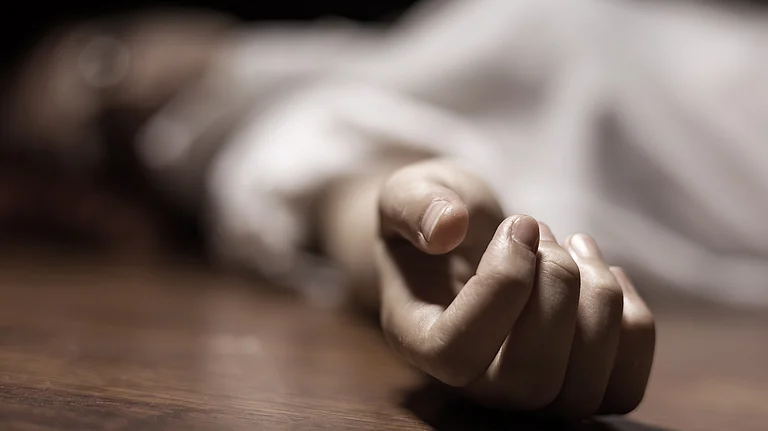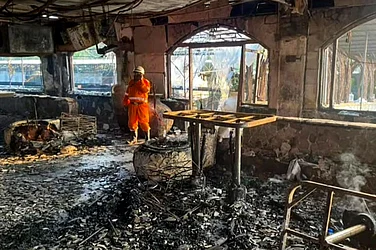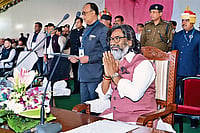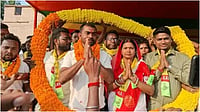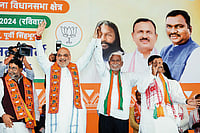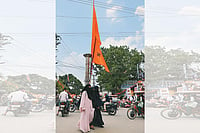On January 31, when the ED arrested Jharkhand Chief Minister Hemant Soren for his alleged role in a land scam - just a few months before the Lok Sabha elections - Indian politics took a new turn. It was not only the arrest of a CM that seemed to be unprecedented in the recent past, it was the arrest of an Adivasi CM that led to further controversies. That Soren’s arrest was not taken lightly by the Adivasis could be realised from the fact that BJP’s total seats in 131 reserved constituencies came down from 77 to 52. Moreover, in Jharkhand, BJP - for the first time in the state’s history - lost all the ST reserved seats. Though Soren was later released on bail after the intervention of Jharkhand HC, Adivasis took it as a political humiliation, say the leaders and activists.
Against this backdrop, as the world celebrates the International Day of the World’s Indigenous Peoples, one can’t help but ponder on how Adivasis have been treated socially, economically and politically since independence. In 1982, United Nations Working Group on Indigenous Population (UNWGIP) was formed and the group held its first conference on August 9 the same year. Twelve years later, on December 23, 1994, the UN General Assembly in its resolution 49/214 marked August 9 as the International Day of the World’s Indigenous People.
But did they receive the promised constitutional rights in India? Does political representation resolve the foundational issues of atrocity, stigma and dignity?
In 2024 budget, Union Finance Minister Nirmala Sitharaman has announced Janjatiya Unnat Gram Abhiyaan with an objective to provide basic facilities to five crore Adivasi families living in 63,000 villages across the country. The budget has also allocated Rs 13,000 crores for the Ministry of Tribal Affairs - a rise of 4.31 per cent in contrast to the allocation in the last financial year. Union Tribal Minister Jual Oram called it ‘transformative scheme’ that would ‘uplift’ the socio-economic situation of the tribal population.
This is not the first time that the ruling party came up with schemes targeting the tribal population. Last year, on the birth anniversary of Adivasi icon Birsa Munda, PM Modi launched project worth Rs 20,000 crore for the PVTGs. Notably, as per the budgetary allocation, most of the amount would be directed to the development of Ekalavya Model Schools for the Adivasi children.
However, according to reports of UDISE in 2021, Adivasi children have the highest number of school dropout rate - 3.69 per cent, much higher than SC communities that stands at 1.82 per cent. Even in the upper primary and secondary levels the dropout rates of Adivasi students are far higher than the SCs. According to 2011 census, literacy rate of Adivasis stood at 59 per cent, far below than the national average of 73 per cent. However, Ministry of Tribal Affairs while responding in Rajya Sabha in 2023 referred to the Periodic Labour Force Survey (PLFS) report (July 2021 - June 2022), published by Ministry of Statistics & Programme Implementation (MoSPI) and said that the literacy rate of tribals has increased to 72.1 per cent. Still, it is a long way to go to match up with the national average.
While the literacy rate among the tribals has increased in the last decade, the situation of Adivasis in terms of health index is significantly poor in comparison to the other marginalised communities. A recent study by medical journal lancet notes, “The under-five mortality rate among STs continues to be high at 50 per 1000 live births. Child undernutrition is also a major concern, as over 40 percent of ST children below five years are stunted, and a similar percentage are underweight. Additionally, there are new emerging challenges for the ST population. Between 2016 and 2021, the prevalence of elevated blood pressure among ST men and women (15–49 years) has increased by 7.5 and 8.9 percentage points, respectively.”
Notably, atrocities against the community have also increased throughout the last few years. The reports of NCRB show that the attacks on Adivasis have increased by 6.4 per cent from 2020 to 2021. While in 2020, 8,272 cases had been filed against the atrocities of Adivasis, in 2021, it was increased to 8,802 cases.
The question of identity and a separate religion have also not left the Adivasis. The central government hasn’t accepted the demands of Jharkhand to put the Sarna dharma code in tenth schedule to avoid the judicial scrutiny. Rather, last month a derogatory comment from a BJP leader on the descendance of Adivasis evoked further controversies and Adivasis of Rajasthan in protest had sent DNA samples to the leader’s house. From the question of Identity to the developmental index, there is a long way to go for Adivasis. Perhaps a day to celebrate is the beginning.









